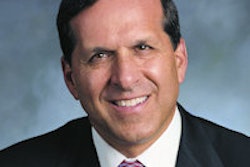
DrBicuspid.com is proud to present an excerpt from Dr. Roger P. Levin's latest book, What Dentists Can Learn From Top CEOs, which was published earlier this year. It draws together many of his observations about how techniques used by top corporate leaders can be applied successfully in dental practices. The following is an excerpt from the chapter "CEOs Create Sustainability."
 Roger P. Levin, DDS, chairman and CEO of practice management consulting firm Levin Group.
Roger P. Levin, DDS, chairman and CEO of practice management consulting firm Levin Group.Sustainability means having the ability to continue functioning indefinitely. Though we often hear this word in reference to natural resources and the environment, it also applies to human enterprises -- from Fortune 500 companies to dental practices.
Sustainability is not something most dentists even think about, but they should. It relates directly to the ongoing success of the practice, during and after the tenure of current practice ownership. Most small business owners are so focused on day-to-day operations, income, and annual profit that they pay little attention to the question of long-term sustainability. However, the factors that contribute to future success are the very same ones that will increase practice production today. In other words, sustainability is synonymous with profitable practice operation.
Following are some examples of how sustainability can work to a practice's advantage.
Systems
Documented step-by-step systems make practice operations sustainable. Without documentation of how practice systems are to be operated, the only guide is what's in the minds of the doctor and staff. If they are absent or staff members leave the practice altogether, no one will be sure of what to do -- and costly system breakdowns will occur. Top companies always have extensive documentation of their systems so that any employee can immediately step in, understand how the system is meant to work, and continue operations.
Given the postrecession challenges faced by dental practices, problem areas should be addressed by implementing and documenting step-by-step systems such as the following:
- Focusing front desk staff on revenue-producing activities
- Following up on all cases that have not been accepted
- Identifying all potential treatment for patients
- Applying a set of One-Day Rules such as those listed below:
- Calling any patient who is one day overdue for an appointment
- Calling any patient who owes the practice money within 24 hours
- Calling the day after a patient receives a presentation and does not accept treatment.
- Following the One-Day Rules with the highly-effective Rule of Three:
- Three phone calls a week for three weeks
- Then three emails a week for three weeks
- And finally three letters a week for three weeks
These are merely examples of the kind of documented, step-by-step systems that dental practices should now rely on. They are essential for counteracting the production-reducing pressures that characterize the new dental economy.
Measurement
Measurement is critical for sustainability. As the CEOs of their practices, dentists need to know key statistics. Unfortunately, most dentists do not. Although information overload certainly interferes with decision-making, ignorance is equally dangerous. Practice owners should look at the numbers that are critical for gauging the current state of the business -- and for determining if operations are sustainable. If certain performance numbers are trending up, business is improving. If the trend is flat or downward, the business will not be able to sustain itself for long ... and changes must be made immediately.
 What Dentists Can Learn From Top CEOs by Dr. Roger Levin.
What Dentists Can Learn From Top CEOs by Dr. Roger Levin.Most dentists don't even see these trends until it may be too late. They are not watching their numbers or analyzing them to determine why changes are occurring or how quickly they are changing.
One of the main reasons dentists are not watching their metrics is because, as the primary practice producers, they don't have time to track and analyze a full range of practice performance numbers, so they tend to skip it altogether. A better approach is to identify a smaller, select group of key production numbers and track them carefully. Some of the more commonly used metrics include the following:
- Total weekly production per chair
- Average production per patient
- Average production per new patient
- Case acceptance percentage
- Percentage of all patients currently scheduled
- Fee collection rate
The set of numbers -- customized to reflect the nature, financial health, and goals of the practice -- should be reviewed at least once a week. This can be done in about five minutes. In other words, it takes very little time, yet it gives the dentist a clear, timely picture of what's going on and whether changes are needed.
Of course, the numbers will always go up and down. A one-month decline may not indicate trouble, whereas several months of consistent erosion could signal imminent declines in practice profitability and doctor income. By tracking the numbers, the dentist will receive early warning of emerging problems and have the opportunity to make changes that will turn the trends around quickly.
Roger P. Levin, DDS, is the chairman and CEO of the practice management consulting firm Levin Group.
Special for DrBicuspid.com members
Order What Dentists Can Learn from Top CEOs today and receive a $100 discount when you use code LG13100.
The comments and observations expressed herein do not necessarily reflect the opinions of DrBicuspid.com, nor should they be construed as an endorsement or admonishment of any particular idea, vendor, or organization.
Copyright © 2014, Levin Group, Inc. Reprinted with permission.



















